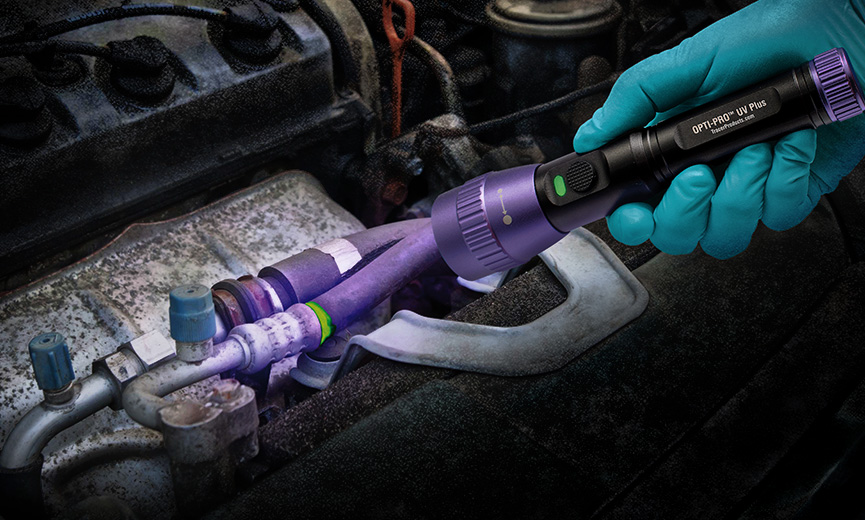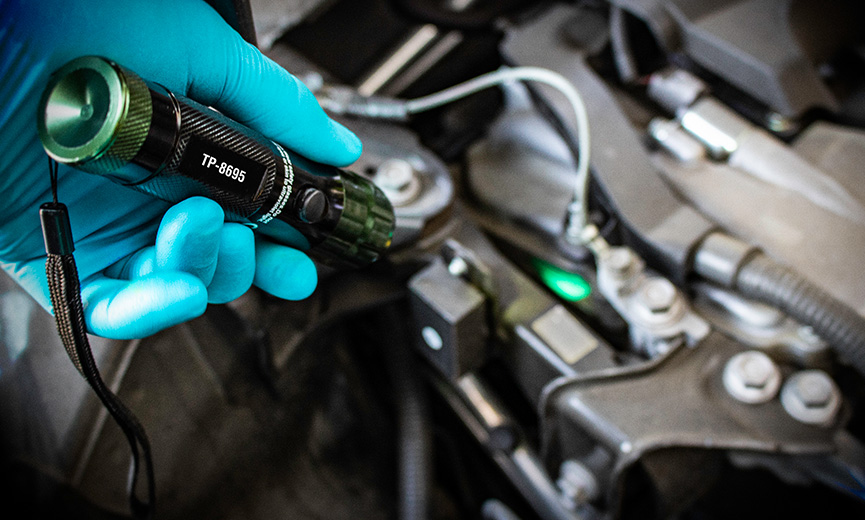
The Cost of AC Leaks
If a car’s air conditioning system has a refrigerant leak, it can create costly problems if it isn’t addressed quickly. These leaks can be hard to locate and very small (pinhole leaks can range from .00001-.0004 inches in diameter). This results in low-volume losses of ac refrigerant over time. Leaks from a vehicle can appear in many forms and come from many sources. They are devastating because they create an “open system” that lets refrigerant out and contaminants in. The earlier a leak is detected, the less costly it is to repair. Unfortunately, if a leak has been affecting your cold air for a while, moisture will have entered your AC system and may have damaged other vital and expensive parts.
What Is Refrigerant and How Does It Work?
Refrigerant acts as an operational fluid for an AC system. It is a key component responsible for cooling your car. Refrigerant cycles through liquid and gas phases, and works to regulate the temperature of your car. There are several different types of refrigerants in use, the latest is the R-1234yf冷媒. This gas is compressed, cooled off in the car’s condenser (mounted in front of the radiator), then expands through the evaporator. As refrigerant expands, it soaks up heat from the car interior. The cool gas is then piped back under the hood to the ac compressor.
What Happens If There’s a AC Refrigerant Leak?
に漏れがあると ACコンデンサー またはその エバポレーター冷媒が逃げてしまい、システムに負担をかけてしまいます。冷媒が不足すると、ACシステムの冷却性能が低下し、部品が損傷します。漏れがあると、湿気がユニット内に侵入することもあります。カビが発生し、正常な動作に支障をきたします。
Refrigerant breakdown causes significant wear-and-tear. For example, when a compressor begins to fail, sharp metal particles can travel through the rest of your AC system. These particles damage the entire system. When this occurs, all cold air and airflow will end.

What’s the Biggest Cause of AC Breakdown?
Age and moisture are the biggest contributors to air conditioning leaks. Mold and mildew, damaged hoses, and loose system connections can cause weak airflow. Clogged expansion valves, faulty compressor clutches, and blown fuses can cause warm air and poor performance.
蛍光式漏水検知
Blacklight, or ultraviolet, 蛍光染料 is the best tool for finding AC leaks. First, fluorescent dye is added to the host system fluid. Then, a technician scans the area for leaks. Wherever the システム液 is escaping, the leak area fluoresces brightly when activated by high-intensity light. Specific 蛍光染料 may be used with oil-based fluids (i.e.: engine oil, transmission and power steering fluids, and fuels), and other dyes will work with most coolants. You must run the engine to distribute the dye throughout the system. UV fluorescent dyes are the safest and easiest leak detection tool available for diagnostic repair and preventative maintenance.